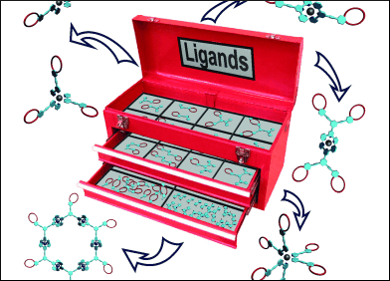Molecular recognition between two or more binding partners with multiple binding sites strengthens a system’s overall binding, despite the weak reversible binding at each site. This is known as the multivalency effect. In order to better understand multivalency, the design and synthesis of sets of hosts with different predefined geometries and sizes is crucial.
Christoph A. Schalley and co-workers, Freie Universität Berlin, Germany, have reported the assembly of a series of di-, tri, tetra-, and hexavalent crown ether host molecules by transition metal coordination of [21]crown-7- and [24]crown-8-substituted bipyridine and terpyridine ligands. The properties of the hosts can be systematically tuned with respect to the size of the crown ether, the metal ion, and the spacer length to access predefined binding geometries.
Isothermal calorimetry (ITC) titrations indicate that the host complexes are ideal systems for future studies of multivalency effects. The hosts are also shown to be well suited to the formation of a variety of multiply threaded pseudorotaxane architectures.
- Efficient Self-Assembly of Di-, Tri-, Tetra-, and Hexavalent Hosts with Predefined Geometries for the Investigation of Multivalency,
Igor Linder, Stefan Leisering, Rakesh Puttreddy, Nadine Rades, Kari Rissanen, Christoph A. Schalley,
Chem. Eur. J. 2015.
DOI: 10.1002/chem.201502056




